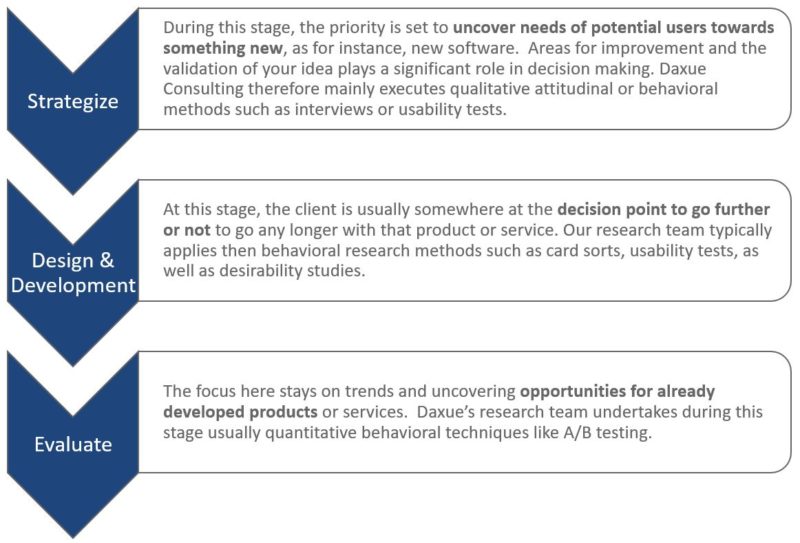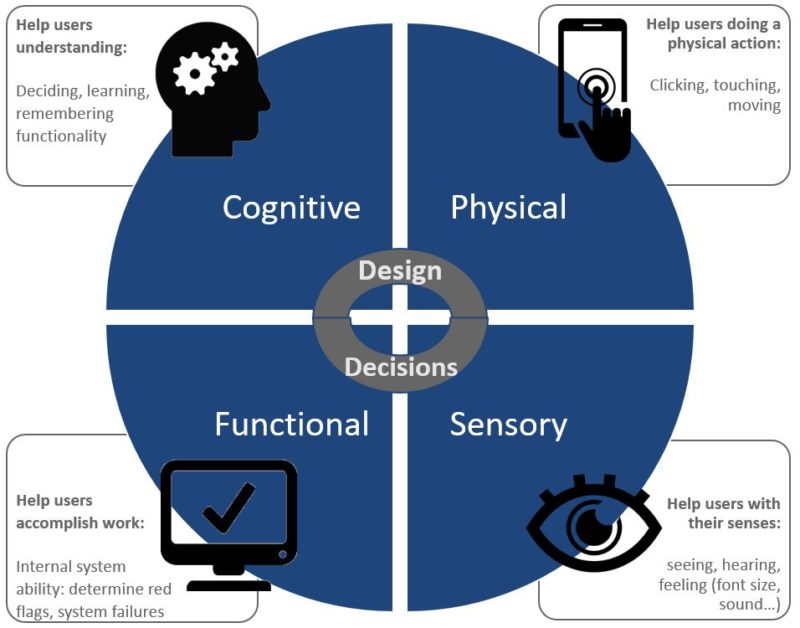Discover how to create an exceptional user experience: UX Research in China

What is User Experience (UX) Research?
User Experience (UX) Research, sometimes also called Design Research, is an umbrella of a broad range of methodologies focused on the needs of users, it is all about the design of a product or service to fit the needs of end-users. The most common area where UX research in China is applied is where people meet technology, such as for instance mobile apps or websites. User Experience is particularly crucial for digital products. However, each and every industry can employ the method; it is the feeling and involvement of a user while utilizing your services or products.
UX, UI, CX: what is the difference and which of them is necessary to employ?
The above terms often create confusion, that’s why Daxue’s China tech consulting team clarifies them first. CX (Customer Experience) comprises UX (User Experience), it is the greater part of the whole. While CX arises through tangency with each and every touchpoint of a brand, UX focuses on the interaction with the actual product or service.UX is sometimes also mixed up with UI (User Interface), but one need to distinguish between the visual part of the product or the service itself and the experience of the end-user with all aspects of it. Evelyn Chen, project leader at Daxue Consulting, explains: “They interact on a mutual basis. UI will always influence UX. For example, if the UI utilizes the color red, which you may not like – the UX will decrease as well”.
As consumers will take notice of all aspects of interaction and experience – whether conscious or unconscious – it is crucial to be consistent with all of them to satisfy the needs best. Having a good UI is necessary to provide good UX and the other way around. In turn, having a good UX is the basis for a good CX. Therefore, each of them is equally important and should be auxiliary towards the other.
Daxue utilizes a variety of different dimensions and types of methods of UX research in China
UX research in China methods can be categorized into three major dimensions but should not automatically be perceived as opposite parties as they can be mutually supportive:
- Qualitative vs. Quantitative
Qualitative methods refer to non-numerical data, such as emotional responses, the Why and How, while quantitative data leads to objective input, numeric data, countable in different measurements.
- Behavioral vs. Attitudinal
Behavioral research is observing people’s actions, what people do, while the attitudinal method asks them about their opinions.
- Generative vs. Evaluative
Generative research helps to define and understand a problem and to develop a set of criteria for a solution, usually conducted at the beginning of a process. Evaluative research used at the later stages of a process to test and refine ideas, which is called iterative design.
It does not necessarily mean you need to take on sides of each dimension. As depending on the objectives of the UX research in China project, Daxue Consulting applies one but also more, a mix of the different types, in the same study. For instance, you may want to know how many users like your product (quantitative) and additionally you want to know the reason behind that (qualitative).

[UX research in China – China technology consulting services]
Every UX research in China project is, therefore, different and unique, and the tasks that one researcher takes on will differ from those appropriate in another setting. The research team of Daxue Consulting executes a range of China tech consulting methods, in any combination possible, comprising observation, understanding, and analysis:
- Usability testing: is the most common methodology used and may be conducted with live products but also with prototypes. It involves asking potential or current users of a product or service to complete a set of tasks. While doing so, our Daxue China tech consulting team will observe the behavior of the participants, where they have troubles and which questions they ask. Additionally, our team provides specialized equipment (such as recording and tracking equipment) which provides additional data to be analyzed afterward. Usability testing can help you, for instance, to choose between different designs.
- Eye tracking: the Tobii system is the most well-known equipment to analyze where a person is looking to.
- Click or scroll testing: is most useful for live sites and software, as it serves as a real test of what is happening. However, Daxue Consulting recommends combining this type of method with another, as it provides no context as to why actions are taken or not taken.
- Card sorts / Process sorting is a quantitative method for categorization and setting up a hierarchy of your system and processes. Daxue Consulting is observing the participants while they put the cards in the order they expect things to happen. Our research team registers trouble the candidates might have with terminology and recognizes if the user is missing a card for his needs. Finally, the research ends up with the processes of each participant, and our team can then uncover certain patterns by analyzing the data.
- Participatory Design Workshops: put the focus on creating solutions for a predefined problem. Our Daxue team organizes, therefore, collaboration sessions between users, designers, developers and other business decision makers to identify the needs as well as the limitations.
- In-depth interviews: Daxue Consulting widely uses interviews to gain additional qualitative data
- Multivariate testing: Our research team utilizes multivariate testing to identify which version performs best. Life sites and products are the primary fields where Daxue applies this method of comparison.
- A/B testing: is used to compare two competing elements, items, apps, processes, or products. According to our research team, it is particularly useful when comparing a revised to an older version, or when collecting data to prove an assumption.
- Desirability studies: ensure that your visuals match your brand goals and the desired emotional response. Daxue Consulting enables this method by showing the participants variations of visual designs and ask them to select words which best describe each based on brand goals and opposites. Our China consultants usually also proceed with follow-up questions before analyzing which design the most positive association has.
- Heuristic analysis is a fast way to ensure industry’s best practices. It is often called expert reviews because it requires several well-trained UX professionals in current user experience practices. They compare them to best practices and make then recommendations according to those criteria.
- Benchmark testing: might uncover which key information needs to be present. Our research team, therefore, tests a particular system, product or service of our client against those of its competition
- Ethnographic research: involves Daxue talking to people and also observing them while they try to achieve their goals in their natural environment (e.g. an in-depth interview in their home)
- Diary Studies: can be used for understanding the context of how something is being used in real life but also for observing how behavior changes over time. Daxue Consulting performs the diary studies by asking participants to record their behavior on a given topic at specific points over time but also, by providing the same set of tasks or questions to answer at regular times (also called Structure Diary Study).
- Focus groups
- Surveys
How Daxue’s research team manages every step of UX research in China
The research our China tech consulting team performs, has two major parts: gathering data and synthesize that data to improve the user experience. At the start of each project, Daxue Consulting puts the focus on learning about requirements, needs, and goals. Step by step this focus shifts to usability and attitudes.
First of all, our research team needs to understand in which product development lifecycle you are. Daxue considers three stages which are necessary to distinguish:

[UX research in China – China technology consulting services]
Secondly, after determining the product lifecycle stage, Daxue Consulting will decide for each client which of the method best to apply. Choosing the right methodology is one of the most important choices the research team has to make – also combinations of the methods explained above are possible – based on the organizational environment and the product stage.
Moreover, the research team will create proto-personas, especially for clients who don’t know much about their potential customers. It is a model, which shows what a user needs and expects to achieve his goal. Solid research about behavior and attitudes of real people is the base of a good persona. Daxue applies the tool to be able to recruit suitable test participants. Personas also help to make design decisions, which the research team classifies in the digital area into the following:

[UX research in China – China technology consulting services]
After ensuring of having the right number and representative participants, according to the established key attributes, the research team starts off with careful and proper preparation including the installment of the equipment. Before the actual execution of the UX Research in China utilizing the concept of methods explained above, Daxue Consulting performs a pilot run.
The research team finally can process the gathered data, which means Daxue organizes the data, cross-analyzes the data, identifies trends, opportunities, and challenges. Our China consultants map them to get an insight of priorities, as well as it makes the primary goals match the research, like maximizing user experience and recognizing must-not-have or must-have features.
Additionally, Daxue’s research team considers elements such as wording. The team usually avoids direct translation and performs sophisticated translation instead, which may be different and helps to identify the brand from other players in the market, especially if the consultants figure out something unique which can be an advantage for the brand identification (such as for instance WeTransfer in WeChat).
As a result of the UX research in China, you will have such a comprehensive knowledge about your end-user, which will make you experience faster decision making and through improved user-centered design, language, and processes you will find more of your customers having a better user experience which in turn, increases customer loyalty.
To know more about Daxue Consulting’s UX research in China, please visit our China blog or contact our team directly.
To learn more about our other China technology consulting services:

